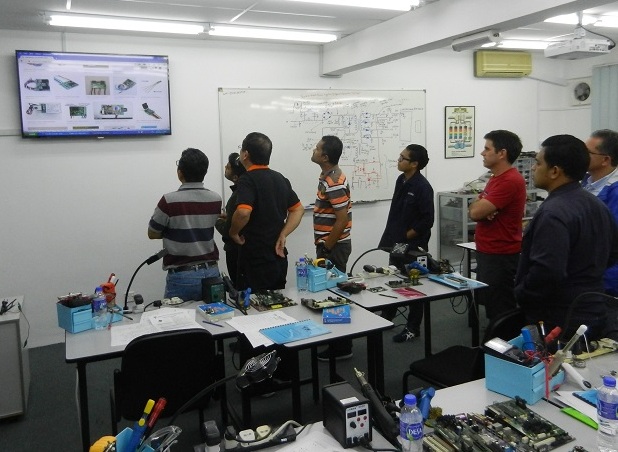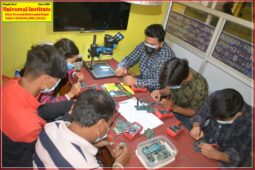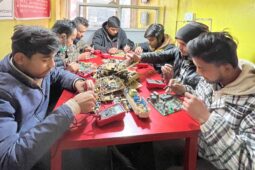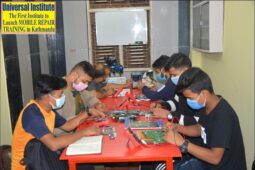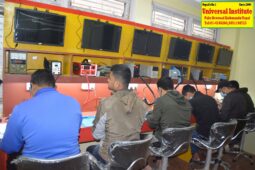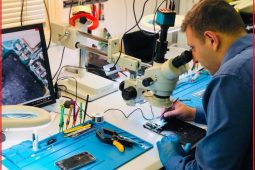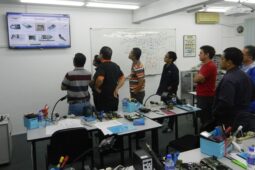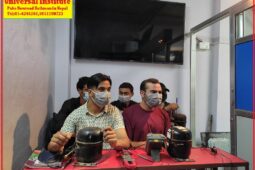Basic Electronics Course
For beginners looking to grasp the essentials of electronics, this course gives you a vital understanding of voltage, current, resistance, Ohm’s Law, Kirchoff’s Laws and more – so you can build an intuition about these electronics fundamentals.This course is helpful for learners who want to understand the fundamentals of electronics, as well as the learners about the various fundamental theorems that are important when learning about electronic like superposition, Thevenin, and Norton are important in the design of electronic circuits.
Electronics is one of the fastest expanding fields in research, application development and commercialization.The research grants are high, jobs are available and there is much money to be made in areas related to electronics. Electronics is everywhere in our lives. It is difficult for the practicing engineer to stay informed of the most recent developments in electronics. What is taught in this course could well be out of date by the time you actually go to use it. However the physical concepts of circuit behavior will be largely applicable to any future development.
The knowledge you gain will hopefully allow you to communicate with design engineers and technicians to enable them to design and build the electronics you require. You should also be equipped to pursue any area of electronics that may interest you in the future. This will include reading more detailed texts, the component data sheets and manuals. I hope you find electronics interesting and enjoyable.
You’ll also learn about important electrical concepts used in consumer electronic devices and get a serious grounding in electronics theories that are absolutely essential for workplace safety and success. Basic Electronics Full Course Covers
Part One: Electronics Technology
SMT (Surface Mount Technology)
- THT (Through Hole Technology)
- Atom And its Structure: (Electron, Proton & Neutron)
- Current Basic Concept:(AC&DC)
- Current, Voltage & Resistance
- Conductors, Semiconductors & Insulators
- Circuits Concept:
- Circuit Basic ,Circuits Types & Ground
- Short Circuits & Open Circuit
- Circuit Test Method: Cold & Hot
Part Two: Electronics Components
(Active Components & Passive Components)
1.Resister & Resistance
- Resistor in Series & Parallel
- Types of Resistors
- Works, Unit & Rating Schematic Symbol & PCB Marking
- SMT & THT Resistor Fault Finding: Short, Open, Leakage
- Resistance and Ohm’s Law
2.Capacitor & Capacitance
- Capacitor in Series & Parallel
- Types of Capacitor: Electrolytic & Non electrolytic, Polarized & Non polarized
- Works, Unit & Rating
- Schematic Symbol & PCB Marking
- SMT & THT Capacitor Fault Finding: Short, Open, Leakage
3.Semiconductor (Diode)
- Diode & Bridge Rectifier: How it Works
- Types of Diode: Power Diode, Zener Diode, LED etc
- Schematic Symbol & PCB Marking
- Anode, Cathode, P-Type Material, N-Type Material & Depletion Region Concept
- Bias Concept: Forward Bias & Reversed Bias
- SMT & THT Diode Fault Finding: Short, Open, Leakage
4.Semiconductor (Transistor)
- Transistor Working Concept
- Layers: Base, Emitter & Collector
- Transistor Type: B.J.T & U.J.T Transistor
- Schematic Symbol & PCB Marking
- NPN & PNP Transistor
- Semiconductor Doping Concept
- Transistor Biasing: Forward Bias & Reversed Bias
- SMT & THT Transistor Fault Finding: Short, Open, Damaged
- MOSFET
- MOSFET Working Concept
- Layers: Gate, Source & Drain
- Schematic Symbol & PCB Marking
- MOSFET Classes: Depletion Mode & Enhancement Mode
- MOSFET Type: N Chanel & P Chanel
- Single MOSFET & Dual MOSFET Concept
- Switch on and Switching MOSFET Concept
- MOSFET Fault Finding: Short, Open And Damaged
- Inductor & Inductance:
- Works, Unit & Rating
- Schematic Symbol & PCB Marking
- Effects on AC and DC
- SMT & THT Inductor Fault Finding: Short, Open, Damaged
- Transformer:
- Working Concept
- Primary Coil & Secondary Coil
- Transformer Type: Step-down & Step-up
- Iron Core & Magnetic Field
- Fault Finding: Short, Open, Damaged
8.Fuse / Protection Concept:
- Working Concept
- Schematic Symbol & PCB Marking
- Fault Finding: Open, Damaged
9.Switches
- Working Concept
- Schematic Symbol & PCB Marking
- Fault Finding: Open, Damaged
- Single Pole Single Throw Switch (SPST)
- Single Pole Double Throw Switch (SPDT)
- Double Pole Single Throw Switch (DPST)
- Double Pole Double Throw Switch (DPDT)
- Push Button Switch.,Toggle Switch.,Limit Switch.
Part Three: Integrated Circuits:
- Works & Inside Form of I.C
- Schematic Symbol & PCB Marking
- Types of I.C: PIN I.C & BALL I.C
- Models of IC: SIP, DIP, PGA, LGA, BGA etc
- Logic Gates & Comparator:
Part Four: Kirchoff’s Laws
- Series and Parallel Combinations of Resistors
- Voltage Divider
- Current Divider
- Branch Current Method
- Loop Current Method .
Part Five: Basic Circuit Concept
- Alternating Current Circuits
- Capacitance Circuit
- Inductance Circuit
- RC Circuit
- RL Circuit
- LC Circuit
- RCL Circuit
- Filter Circuit
- Diode Circuit
- Transistor Circuit
- Operational Amplifier Circuit
- Digital Circuit
Part Six: Power Supply
Advantages of SMPS:
- Greater efficiency because the switching transistor dissipates little power
- Lower heat generation due to higher efficiency
- Smaller in size
- Lighter weight
- Reduced harmonic feedback into the supply main
Applications of SMPS:
- Personal computers
- Machine tool industries
- Security systems
Types of Power Supply
A power supply is a component that supplies Regulator power to at least one electric load. Typically, it converts(AC to DC) one type of electrical power to another, but it may also convert a a different form of energy.
- Switch Mode Power Supply(SMPS)
- Linear Power Supplies
- Variable Power Supply
- Ripple regulated power supply
- Adjustable regulated power supplies
- Battery and solar power supplies & Many More…
Course Duration: Regular: 45 Days & Short Course: 25 Days
Training Time: 1-2 Hours Per day
Course Contain: Theory 20% + Practical 80%
Language of instruction: Nepali/Hindi /English
Eligibility Criteria: 8 to 10th Class (At least Completed Grade 8)
Group structure: 6 Participants per group
New classes starts on: 1st,10th and 20th(Every Month)
